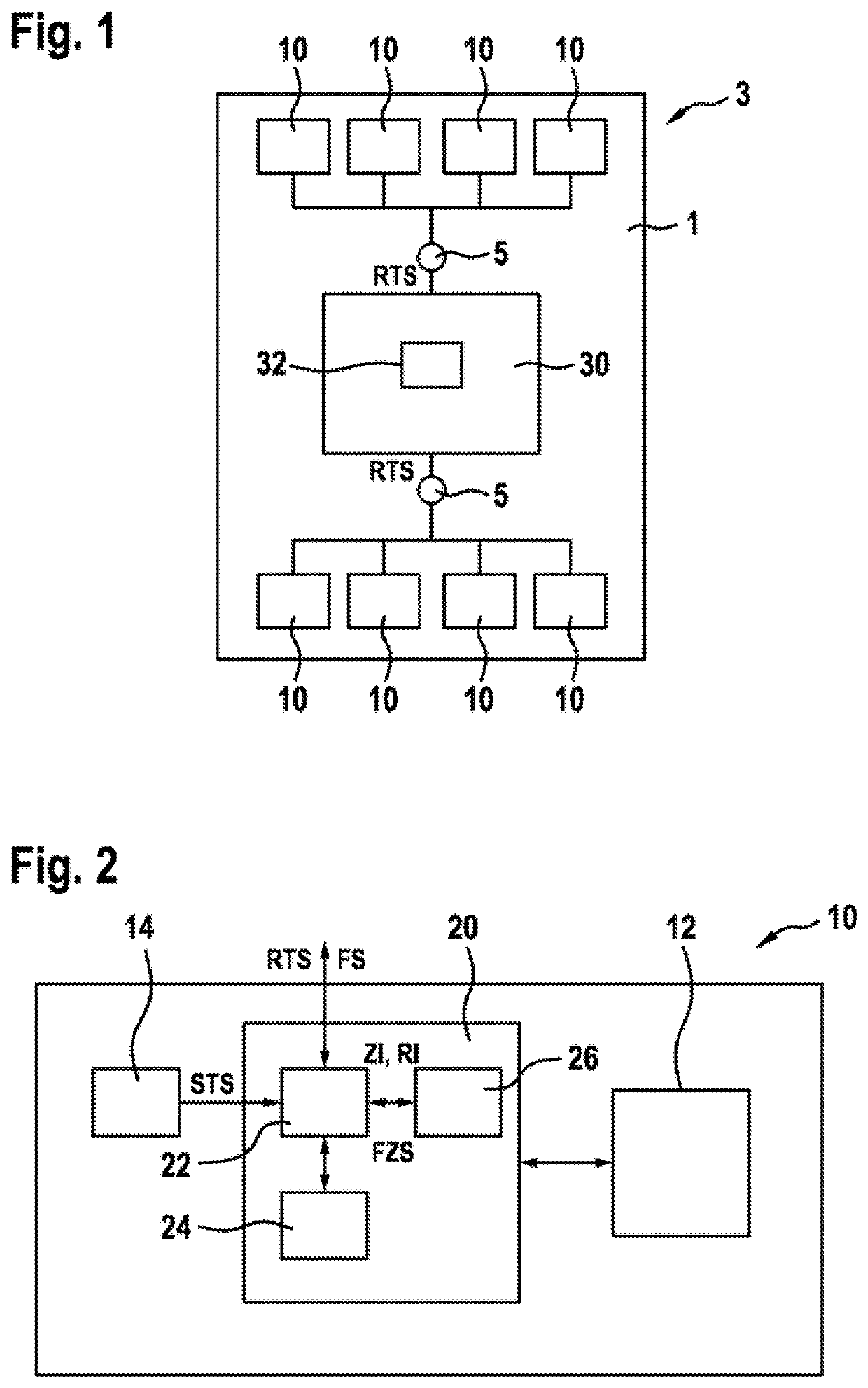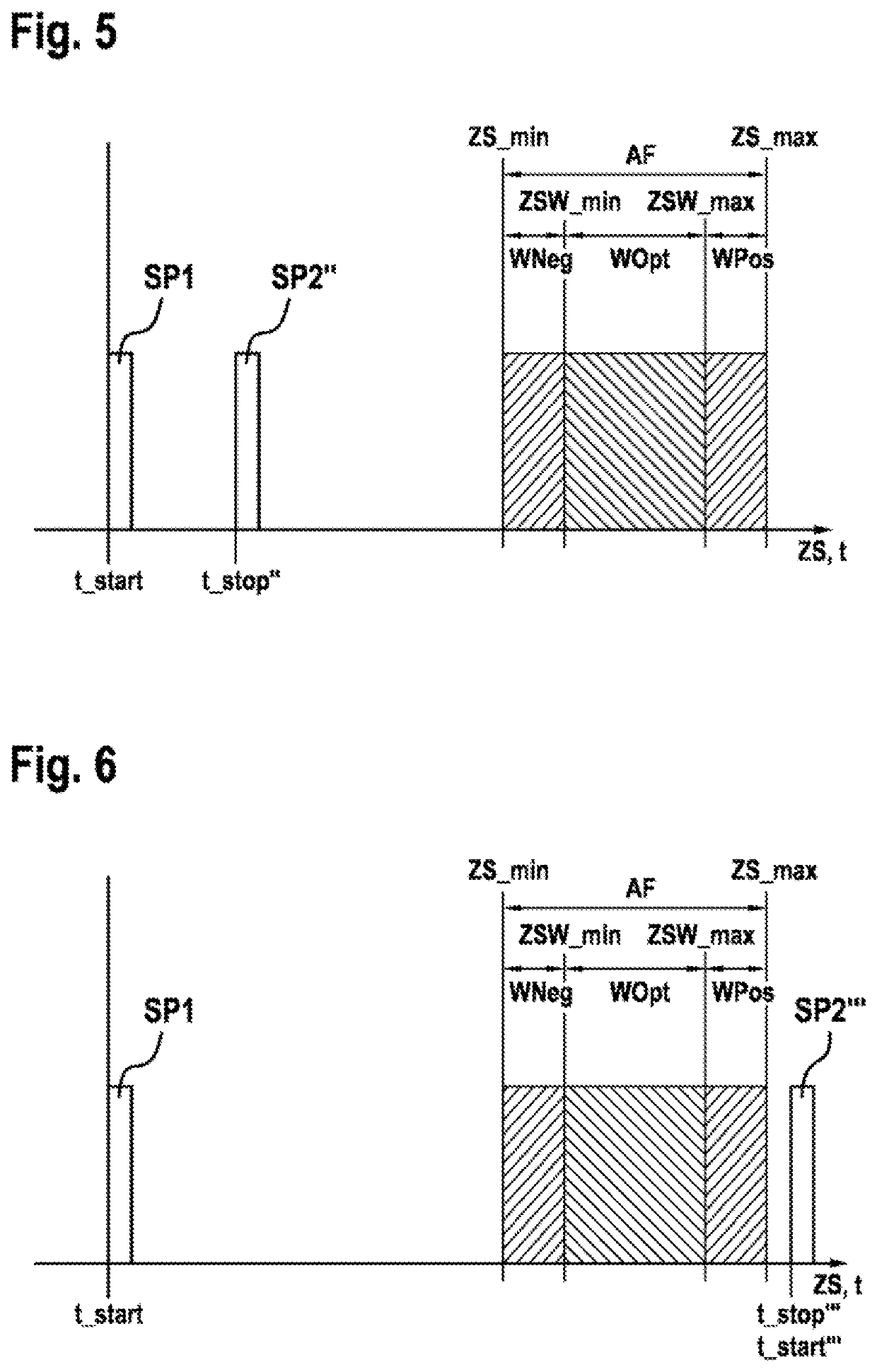Device and Method for Monitoring a Sensor Clock Signal
a technology of sensor clock and device, which is applied in the direction of synchronising signal speed/phase control, generating/distributing signals, instruments, etc., can solve the problems of sensor clock oscillator drifting off or breaking, signal distortion of sensor units on the psi5 bus, etc., to achieve faster alerts, increase diagnostic coverage of corresponding airbag systems, and improve road safety
- Summary
- Abstract
- Description
- Claims
- Application Information
AI Technical Summary
Benefits of technology
Problems solved by technology
Method used
Image
Examples
Embodiment Construction
[0025]As can be seen from FIGS. 1 and 2, a sensor arrangement 3 for a vehicle 1 in the illustrated exemplary embodiment comprises a control unit 30 with a reference oscillator 32, which generates and outputs a reference clock signal RTS with a predetermined reference period duration T_ref, multiple bus nodes 5, of which two bus nodes 5 are illustrated and multiple sensor units 10, each implemented as peripheral airbag sensors and connected to one of the bus nodes 5. In the exemplary embodiment illustrated, four sensor units 10 are connected to one of the bus nodes 5. In the illustrated sensor arrangement 3, which is part of a personal protection system of the vehicle 1, the individual sensor units 10, the bus nodes 5 and the control unit 30 are connected to each other via current-modulated two-wire buses and communicate by means of the PSI5 standard. This allows the control unit 30 to receive and evaluate the pressure or acceleration data or the rotation rate data collected by the s...
PUM
 Login to View More
Login to View More Abstract
Description
Claims
Application Information
 Login to View More
Login to View More - R&D
- Intellectual Property
- Life Sciences
- Materials
- Tech Scout
- Unparalleled Data Quality
- Higher Quality Content
- 60% Fewer Hallucinations
Browse by: Latest US Patents, China's latest patents, Technical Efficacy Thesaurus, Application Domain, Technology Topic, Popular Technical Reports.
© 2025 PatSnap. All rights reserved.Legal|Privacy policy|Modern Slavery Act Transparency Statement|Sitemap|About US| Contact US: help@patsnap.com



